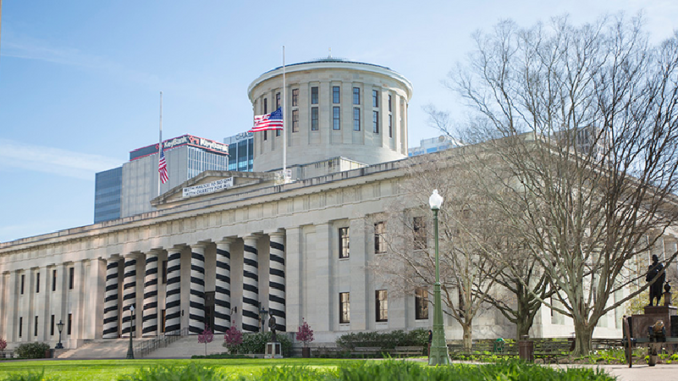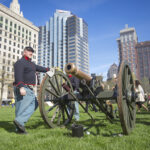
The Sesquicentennial (150th) anniversary of the Civil War has reached its final year. Commemorative events have been taking place across the country since 2011. These have included reenactments of major battles, tours of battle sites, lectures and other educational opportunities. Much of 1865 was made up of a series of surrenders and the eventual disbandment of Confederate troops. But it was the assassination of President Abraham Lincoln that on April 14 that many consider the true end of the Civil War.
Outpouring of Grief
Prsident Lincoln died the day after he was shot by stage actor John Wilkes Booth at Ford’s Theater. Funeral services were held in Washington, D.C., with 40,000 people joining the funeral procession. The president’s widow Mary Todd Lincoln carried out her husband’s wishes to be buried in, “some quiet place,” and chose Springfield, Illinois, where he had lived as an adult and began his political career. His body was transported by train. The body of his son Willie (who had died in 1862 while the family resided in the White House) was exhumed and to be buried next to the president in Springfield.
Upon hearing the news of the president’s murder, many citizens experienced a collective trauma. The Department of War decided to allow the country to share its grief by expanding the train route to Springfield and stopping in various major cities along the way. The funeral train covered more than 1,600 miles and retraced the route Lincoln made as the president-elect on his way to his first inauguration in 1861. The train traveled north through Baltimore, to Philadelphia, New York City, across upstate New York, through Ohio (Cleveland and Columbus), across Indiana (Indianapolis), and up to Chicago, before finally arriving in Springfield, Illinois.

The journey to Lincoln’s final resting place was not without its challenges. Because the nation was still at war and recovering from many years of sectional division, not everyone was sad about the news of Lincoln’s assassination. A stop in Cincinnati was canceled for fear of a group of Confederate sympathizers would disrupt the memorial. Also, embalming as we know it today did not exist, so preserving the president’s body over the duration of the trip took considerable effort. The body was packed in ice and the coffin lined in lead, making it very heavy. Despite the ice, Lincoln’s corpse began to suffer as the train traveled slowly through the heat of the Midwest’s Spring months. Morticians used chalk to cover a green complexion and flowers were used to disguise the smell at the various viewings.
More than three million people observed the “moving funeral service” over the span of sixteen days.
(View the gallery of images from the recent commemoration of the funeral train’s stop in Columbus, Ohio.)
Living History and Lasting Impact
One hundred and fifty years later, the Civil War is considered by many to be the United States’s greatest national crisis. That Lincoln was killed less than three weeks after its conclusion (and only a few months into his second term) further devastated the nation. To honor the anniversary of this occasion, commemoration events, including reenactments of the Funeral Train processional are being held all across the Midwest.







